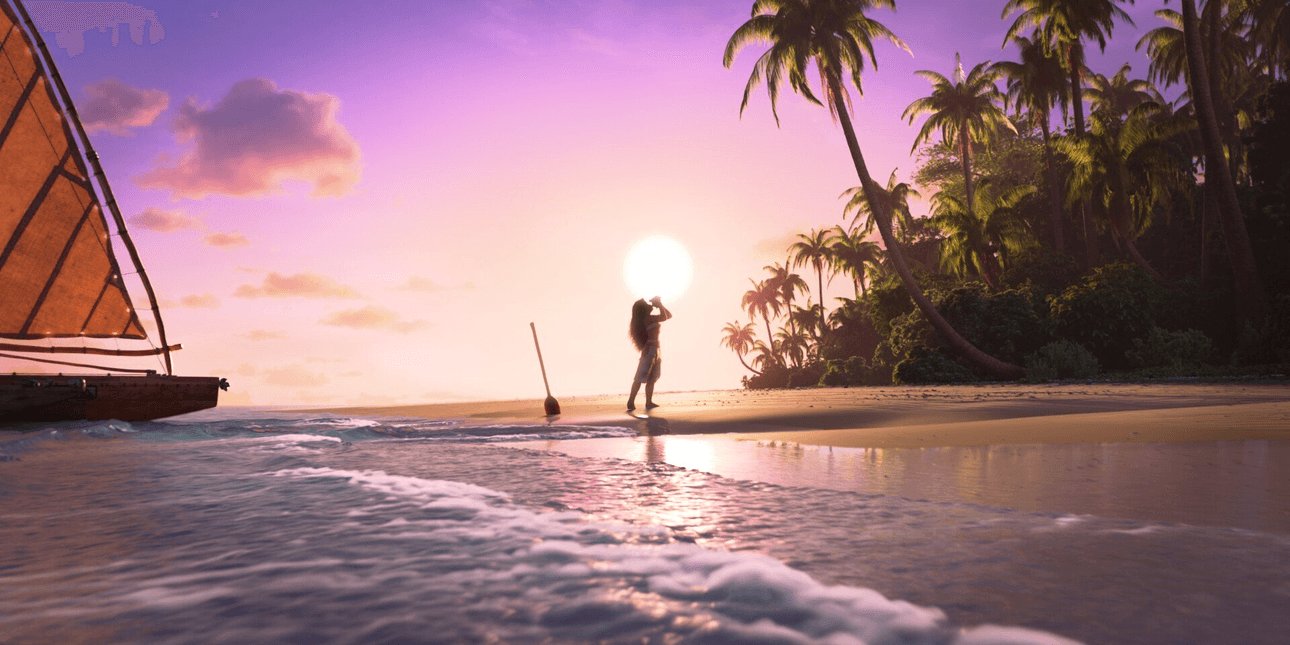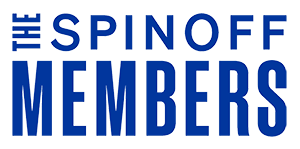Disney’s latest release, Moana 2 Reo Māori, is its first indigenous-language film to premiere globally alongside its English counterpart – and it could be a game-changer for Aotearoa.
In 1937, Disney released its first full-length animated film, Snow White and the Seven Dwarfs. Now, 87 years on, the iconic film studio has produced more than 800 titles under its name, many of which have been adapted into languages other than English. In the 90s, The Lion King became the first film Disney translated into the language of a culture that inspired the film with the release of a Zulu version. But Disney has never premiered a film in an indigenous language at the same time as its English-speaking counterpart – until today.
Set in a mythical ancient Polynesia and based on Polynesian kōrero tuku iho, Moana 2 Reo Māori tells the story of a wayfinder who journeys to the far seas of Oceania and into dangerous, long-lost waters, searching to uncover an ancient secret vital to saving her island and the ocean.
The new film is the sequel to the hugely successful Moana, which was released in English in 2016, with a reo Māori version coming out the following year. Seven years on, with Moana 2 being released simultaneously in both languages, it’s a monumental achievement – not just for the film itself but for indigenous storytelling worldwide.
“We want our kids to feel like it’s normal for them to have their films in te reo Māori at the same time as English. That should be normal,” says producer Chelsea Winstanley (Ngāti Ranginui, Ngāi Te Rangi).
Winstanley, one of three producers on the project, describes it as a “full circle” moment. The first Moana Reo Māori marked a pivotal point in normalising te reo Māori in cinema, but she says the stakes were raised this time around. While the production process was not without its hurdles, Winstanley says the milestone represents not just an artistic achievement but also a political statement.
“It’s about reinstating te reo Māori as the language of the land. For our babies to walk into a cinema and hear their language next to English – it’s everything we’ve ever wanted.”
The release required a tight turnaround, with translators, animators and producers racing to keep pace with Disney’s production schedule. Winstanley’s company Matewa Media has been behind the reo Māori translations of several Disney films in recent years, including the first Moana, Frozen, Coco and Encanto. These films had usually been completed by the time they were sent to be translated into reo Māori but because of the dual release of Moana 2, the team had to work with unfinished animations – some still resembling stick figures – while simultaneously adapting the dialogue to fit Māori cultural nuances.
“It was madness,” Winstanley says. “We’re used to having time to massage these translations and really consider the casting. But this was different – fast and furious. Still, we knew we couldn’t miss this opportunity.”
One of the film’s standout moments is a haka choreographed by Tweedie Waititi (Te Whānau-ā-Apanui, Rongowhakaata), which Moana performs. Winstanley describes the surreal experience of choreographing the haka in a London hotel stairwell, with tourists curiously watching on as Pere Wihongi (Te Rarawa, Ngāpuhi, Ngāti Kuri, Ngāti Wai), music co-director and music translator, danced with a broomstick.
“It’s hilarious now, but at the time, we were just doing whatever it took to make it work,” Winstanley says. “When we finally saw the animation of Moana performing that haka using our choreography – it was mind-blowing.”
While rightfully proud to have yet another Disney film translated into te reo Māori, Winstanley acknowledges past criticisms of Disney’s history of cultural appropriation, noting past missteps in films like Pocahontas and even the original Moana. However, she believes Moana 2 represents significant progress.
“They’ve come a long way,” says Winstanley. “They’ve learned to listen. This time, the cultural council was larger, more inclusive, and deeply involved. Tweedie was vocal whenever something wasn’t right, and that pushback was respected.”
The result, she believes, is a film that is authentically Māori and Polynesian, while retaining its universal appeal. “When you hear Moana speaking te reo Māori, it resonates on a different level. It’s more than a translation – it’s a cultural reclamation.”
Despite Disney’s resources, Winstanley notes that the real battle lies closer to home, convincing New Zealand cinemas to back te reo Māori films. Historically, local cinemas have been reluctant to take risks on indigenous-language content, often pulling films after only a few days. Winstanley hopes Moana 2 will change that narrative.
“Our biggest challenge is proving we’re a viable market,” she explains. “But we’ve shown cinemas that audiences exist. Schools are booking screenings, families are flocking to theatres – it’s undeniable.”
She’s urging cinemas in Aotearoa to support reo Māori films: “We’re opening up opportunities for everyone in Aotearoa. This isn’t just for Māori – it’s for all of us to celebrate te reo Māori as a living, thriving language.”
For Winstanley, Moana 2 isn’t just about representation – it’s about normalisation. “We want our kids to see themselves on screen and think, ‘This is normal.’ That’s the goal. They shouldn’t have to fight for visibility – it should just be there.”
Another added benefit is how the film nurtures future talent. Waititi’s own daughter, Te Urikore Waititi-Lake (Te Whānau-ā-Apanui), worked on the production, while many Māori actors, including Rachel House (Ngāi Tahu, Ngāti Mutunga) and Temuera Morrison (Te Arawa, Ngāti Whakaue, Ngāti Maniapoto, Ngāti Rarua), both of whom featured in the English and reo versions of the first Moana, returned to reprise their roles in te reo Māori. “It’s an intergenerational transfer of knowledge,” she says. “We’re showing the world – and ourselves – what’s possible.”
While Winstanley is grateful for the partnership with Disney, she’s clear that this is only the beginning. “We don’t just want to adapt Disney films – we want to create our own. This is a stepping stone.”
Her vision extends beyond the theatre, with aspirations to use films like Moana 2 as educational resources. The first Moana was translated into Hawaiian and Tahitian and subsequently used in schools in those regions. “The magic of these stories is their potential to inspire – whether it’s in the classroom or at home. This isn’t just about entertainment; it’s about empowerment.”
With more than 40 locations nationwide screening the film in te reo Māori with English subtitles, Winstanley hopes it will be a unifying moment for all of Aotearoa. “This is a chance for us to come together and celebrate our unique identity as a bilingual nation. Let’s make it count.”

